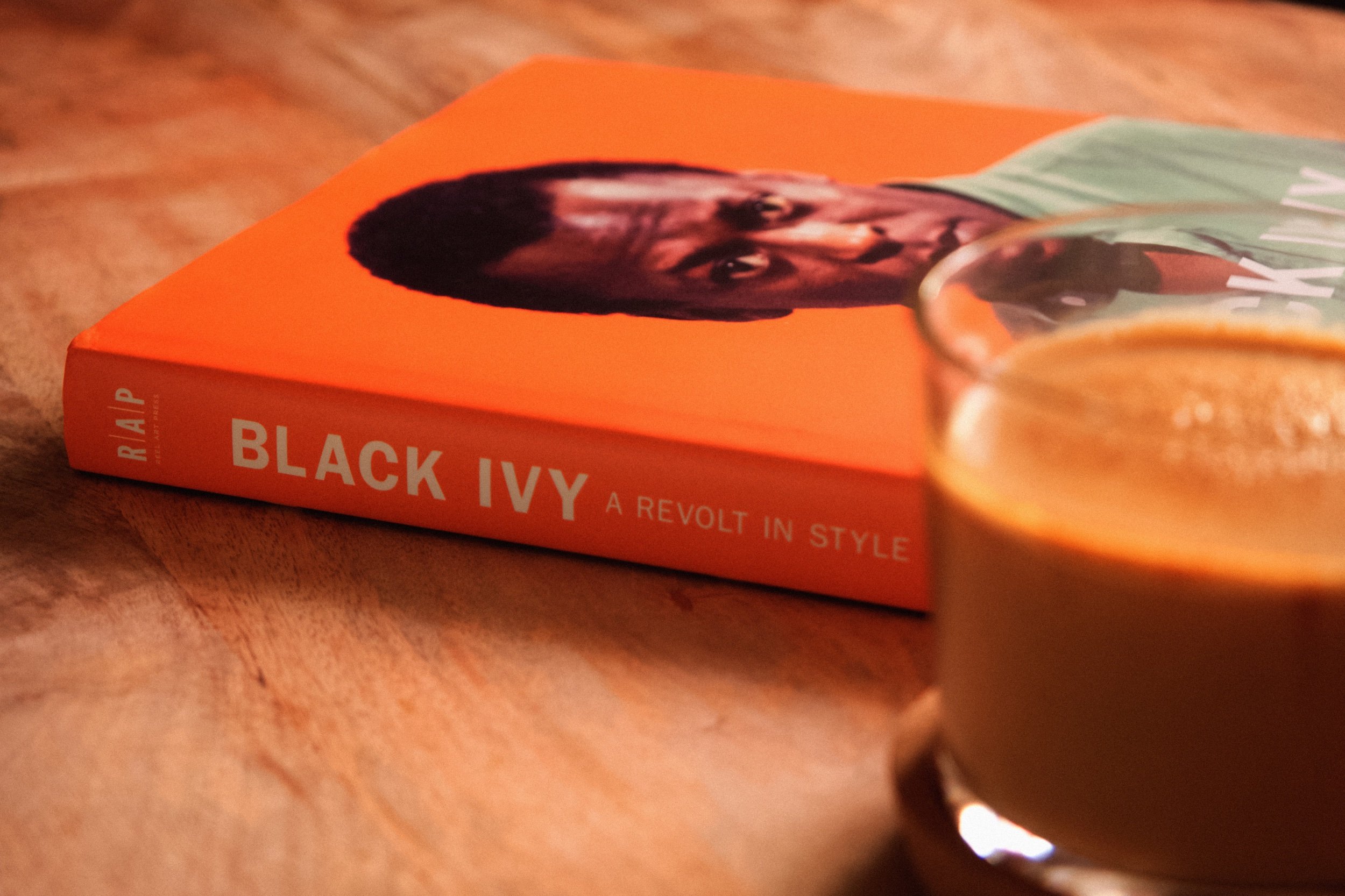Black Ivy, A Revolt In Style

Black ivy is about the intersection of where revolution meets style, all told from the perspective of well-dressed, well-intentioned cultural change agents.
Before we dive into the highlights of the book, I’d like to share two excerpts that have stuck with me from the moment I open the book:
“When designing the costume for the 1992 Spike Lee biopic starrring Denzel Washington, Avery Lucas said he was determined to capture ‘that touch of flamboyance’ that made Malcolm X’s style so distinctive. A key part of his look was his glasses. Called Sirmont and made by American Optical, X owned a number of pairs all of the same model but made from different materials. This allowed him to change the frame according to what he was wearing at the time—now, if that isn’t a touch of flamboyance, what is?” — JJ
That excerpt really speaks to the attention to deal that Malcolm X had for every aspect of his life, it articulates the importance of not overlooking something because it could be considered a small detail. Malcolm X, like so many others mentioned in the book, was dressing to face and change the world he inherited. First impressions still mean a lot, and in some cases those are the last impressions we have of people. How people are seen, how they represent themselves, it builds into their “legend” and becomes part of their story.
The second excerpt is from Andrew Hatcher, the first Black Press Secretary to the White House, with the Kennedy administration.
“The organization recognizes that the visibility of successful African Americans has an immense impact on younger generations: one of the mottos is ‘what they see is what they’ll be’.” - JJ
Andrew Hatcher went on to found 100 Black Men, an organization that focuses on mentoring Black youth.
“what they see is what they’ll be“ sticks with me because it’s a very literal and impactful statement, we are, in many instances reflections of our observations.
Given the archival nature of the images, I was genuinely excited to just study the photography. As a photographer I’m immediately reminded of the importance of documenting the cultures and communities I belong to because those images will become artifacts for the following generations. Moreover, I’m so amazed by the technical beauty of the images. I’m going to assume that a great deal of the portraits were candid, while the other images feel more photojournalistic — unscripted scenes of the times. All of the photos are beautiful, thought provoking, and timeless — I constantly find myself asking what happened in the moments before and after each frame. The contact sheets from these photographers must hold so much history, and come with amazing stories.
How the authors choose to approach chapters for the book is very brilliant, each chapter sets the tone for the collection of images and stories you’re about to read. (I know that’s the general function of chapters, but given that this book is based on the collections of archival photos from various artist, each chapter break really helps to transposition into what you’ll be reviewing next.)
A two of my favorite chapters, in no particular order:
In Schools — The opening sentence to this chapter starts with, “This is when kids became rule breakers and heroes at the same time.” This let me know immediately that I was about to see pages of young people looking sophisticatedly unbothered in the face of adversity.
In the City — This chapter steps away from notable musicians, artists and activists,and brings us into the communities to see how people really interpreted Ivy style into their everyday lives. It’s in this chapter that I feel the greatest connection to this book, as a man and artist. As a young man I was told how my clothes can be used and/or seen as reflection of myself, an extension of my personality. As a photographer, it reinforces the idea of giving dignity and graces to those you photograph, especially when you’re a guest in their “home”.
Black Ivy is a beautifully constructed historical reference document for how African Americans have not only embraced a style, but transformed into a visual language for equality.
Order a copy from my favorite bookstore!






